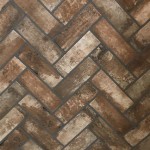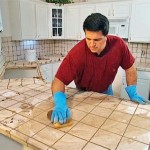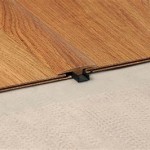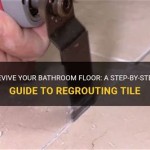Can You Put Wood Flooring Over Asbestos Tiles? A Comprehensive Guide
The presence of asbestos in older homes is a significant concern for many homeowners, particularly when undertaking renovation projects. Asbestos, a naturally occurring mineral fiber, was widely used in building materials due to its fire-resistant and insulating properties. One common application was in the production of floor tiles, especially in homes built before the 1980s. When considering new flooring options, the question of whether to install wood flooring over existing asbestos tiles frequently arises. This article explores the complexities of this situation, offering guidance on the potential risks, regulations, and best practices.
Asbestos-containing floor tiles typically pose a minimal risk when they are intact and undisturbed. The danger arises when the tiles are damaged, broken, or sanded, releasing asbestos fibers into the air. These airborne fibers, if inhaled, can lead to serious health problems, including asbestosis, lung cancer, and mesothelioma. Because of these health risks, the handling and removal of asbestos-containing materials are strictly regulated by various governmental agencies.
Before considering any flooring project involving potentially asbestos-containing materials, it is imperative to identify whether asbestos is present. This typically involves hiring a qualified asbestos inspector to collect samples and conduct laboratory testing. Attempting to identify asbestos by visual inspection alone is unreliable and not recommended.
Understanding the Risks of Disturbing Asbestos Tiles
The primary concern when dealing with asbestos tiles is the potential for fiber release. Any activity that disturbs the tiles, such as breaking, cutting, or sanding, can generate airborne asbestos fibers. Simply walking on intact asbestos tiles generally does not pose a significant health risk. However, if the tiles are already cracked or damaged, even regular foot traffic could contribute to the release of fibers. Removing the tiles without proper precautions is particularly hazardous and should only be performed by trained and certified asbestos abatement professionals.
Encapsulation, which involves covering the asbestos-containing material with a protective layer, is often considered a safer and more cost-effective alternative to removal. Installing wood flooring over asbestos tiles is a form of encapsulation, provided that the installation process does not disturb the tiles. This means avoiding methods that require nailing, screwing, or otherwise penetrating the existing floor.
Even with encapsulation, it's essential to regularly inspect the new flooring for any signs of damage that could compromise the integrity of the encapsulated asbestos. If the wood flooring is damaged and the underlying asbestos tiles are exposed, immediate action is necessary to prevent fiber release.
Regulations and Guidelines for Handling Asbestos Materials
Federal, state, and local regulations govern the handling, removal, and disposal of asbestos-containing materials. These regulations are in place to protect workers and the public from asbestos exposure. The Environmental Protection Agency (EPA) and the Occupational Safety and Health Administration (OSHA) are two key federal agencies involved in regulating asbestos. State and local regulations may be more stringent than federal regulations, so it is important to consult with local authorities before undertaking any asbestos-related work.
In many jurisdictions, homeowners are permitted to perform limited asbestos abatement work on their own properties, but this may be subject to specific requirements. For example, homeowners may be required to use specific protective equipment, follow strict work practices, and dispose of asbestos-containing materials at designated disposal sites. For larger projects or when in doubt, it is always advisable to hire a licensed asbestos abatement contractor.
Contractors who perform asbestos abatement work must be properly trained and certified. They are required to follow specific procedures to minimize fiber release, protect workers, and ensure proper disposal of asbestos waste. Before hiring a contractor, it is essential to verify their credentials and ensure that they are familiar with all applicable regulations.
Best Practices for Installing Wood Flooring Over Asbestos Tiles
If you determine that installing wood flooring over asbestos tiles is the most suitable option for your situation, it is crucial to follow best practices to minimize the risk of asbestos exposure. The following steps outline a safe and effective approach:
1. Professional Assessment: Prior to starting any work, hire a qualified asbestos inspector to confirm the presence of asbestos and assess the condition of the tiles. The inspector can also advise on the best course of action based on the specific circumstances.
2. Floor Preparation: Thoroughly clean the existing asbestos tiles to remove any dirt, debris, or loose material. Ensure the floor surface is level and stable. If there are any damaged tiles, repair them with an encapsulating compound specifically designed for asbestos-containing materials. This will help prevent further fiber release.
3. Underlayment Installation: Install a thick, high-quality underlayment over the asbestos tiles. The underlayment serves as a barrier between the old tiles and the new wood flooring, providing cushioning and sound insulation. Choose an underlayment that is compatible with both the asbestos tiles and the wood flooring.
4. Floating Wood Floor Installation: Opt for a floating wood floor system that does not require nailing or gluing directly to the subfloor. Floating floors are designed to interlock and "float" on top of the underlayment, avoiding any disturbance to the asbestos tiles. This method significantly reduces the risk of fiber release.
5. Careful Material Handling: When cutting wood flooring planks, use a saw equipped with a HEPA filter vacuum to capture any dust generated. Work in a well-ventilated area and wear appropriate personal protective equipment, such as a respirator and disposable coveralls.
6. Disposal of Waste: Properly dispose of any waste materials generated during the installation process, such as saw dust and packaging. Follow all applicable regulations for the disposal of asbestos-containing waste. In some cases, you may need to double-bag the waste in heavy-duty plastic bags and label them appropriately.
7. Post-Installation Inspection: After the wood flooring is installed, carefully inspect the floor for any signs of damage or gaps that could expose the underlying asbestos tiles. Address any issues promptly to maintain the integrity of the encapsulation.
8. Ongoing Monitoring: Regularly monitor the wood flooring for signs of wear and tear. If the flooring is damaged, consult with an asbestos professional to determine the best course of action. Avoid attempting repairs yourself if there is a risk of disturbing the asbestos tiles.
In addition to these best practices, it is crucial to document all steps taken during the project, including the asbestos inspection report, the type of underlayment and wood flooring used, and any repairs made to the asbestos tiles. This documentation can be helpful for future reference and can also be required by local regulations.
By carefully considering the risks, regulations, and best practices outlined in this article, homeowners can make informed decisions about whether to install wood flooring over asbestos tiles. When in doubt, it is always advisable to consult with qualified professionals, including asbestos inspectors, abatement contractors, and flooring installers, to ensure a safe and successful project.

Installing Hardwood Over Asbestos Tiles Homeadvisor

How To Install Hardwood Flooring Over Asbestos Tiles 123

How To Seal Asbestos Tiles Hunker

Can I Put A New Floor Over Asbestos Tiles Branch Environmental

Flooring That Can Be Installed Over Asbestos Tile

Flooring That Can Be Installed Over Asbestos Tile

How To Install Tile Over Asbestos Ehow

Is It Epa Acceptable To Cover Asbestos Tiles With Hometalk

Asbestos Floor Tiles 101 What To Know About This Old Home Hazard Bob Vila

How To Waterproof A Basement
Related Posts








